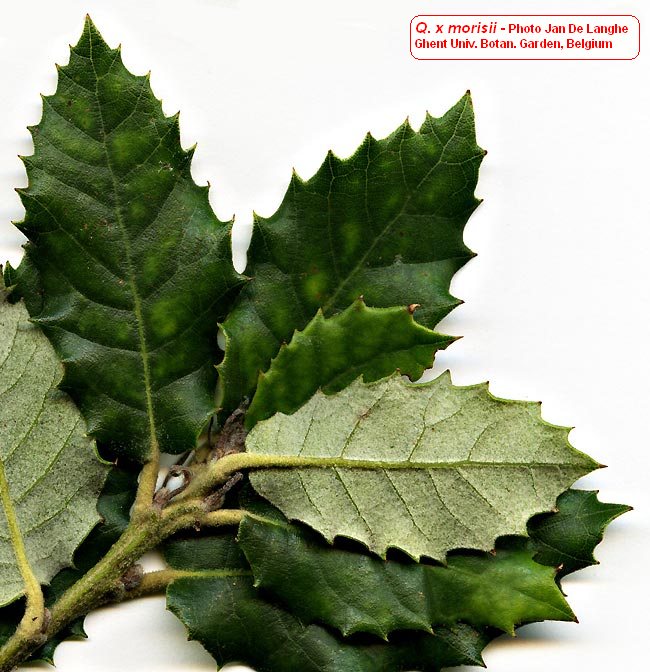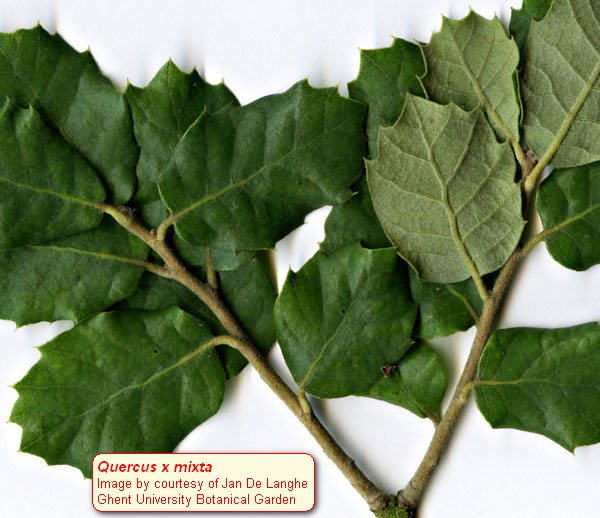| Quercus x morisii | |
| Author | Borzi 1881 Nuovo Giorn. Bot. Ital. 13: 10 |
| Synonyms | ilex
x suber = x bertrandii Albert & Reynier 1902 = x mixta Villalobos ex Colmeiro 1888 = x morisii f. mixta (Villar ex Colm.) Franco & Vasc. 1954 Enum. Pl. Penins. Hispano-Lusit. 4: 677 = hispanica Colm. & Bout. = x pseudomorisii A.Camus 1935 |
| Local names | |
| Range | France, Spain, Portugal, Italy, Sardinia, Sicily, Algeria; |
| Growth habit | 5-20 m; |
| Leaves | 3-7.5 x 2-4.5 cm, oblong lanceolate or lanceolate; leathery; lustrous light green, hairless above; whitish tomentose beneath; apex pointed, base truncate or subcordate; margin dentate-serrate, with mucronate regular teeth, sometimes entire at basal half; few, prominent secondary veins; petiole tomentose 0.5-1.2 cm; |
| Flowers | male flowers with 4-5 slightly pubescent anthers and longer, narrower stigmas than in Q. ilex; pistillate flowers on tomentose, 1-2 cm long rachis; |
| Fruits | acorn solitary with stiff, tomentose, 1-3 cm long stalk; cup bell-shaped enclosing 1/2 of acorn, covered with numerous, silky scales with straight, free tip; maturing in 1 year; |
|
Bark, twigs and |
bark thick but not or weakly corky; young twig densely whitish tomentose; bud small, tomentose, with persistent bracts; |
| Hardiness zone, habitat | prefers wet, not calcareous soils; |
| Miscellaneous | -- Differs from Q.suber
in having leaves less pubescent beneath, cup less fringed at margin, bark
less corky; -- Q. x pseudomorisii Camus is not different, as it is actually the hybrid between Q. ilex and Q. suber var. occidentalis; |
| Subspecies and varieties |
-- For today's
Authors, Q.x mixta is more precisely the hybrid between
Q.suber and Q.rotundifolia; -- According to
F.M. Vázquez, A. Coombes & al. 20118, the name of this taxon
has changed, becoming : Q. x avellaniformis nothosubsp.
morisii (Borzi) F.M. Vázquez & al. 2018; see Q.
avellaniformis. |
| Pictures |
|




